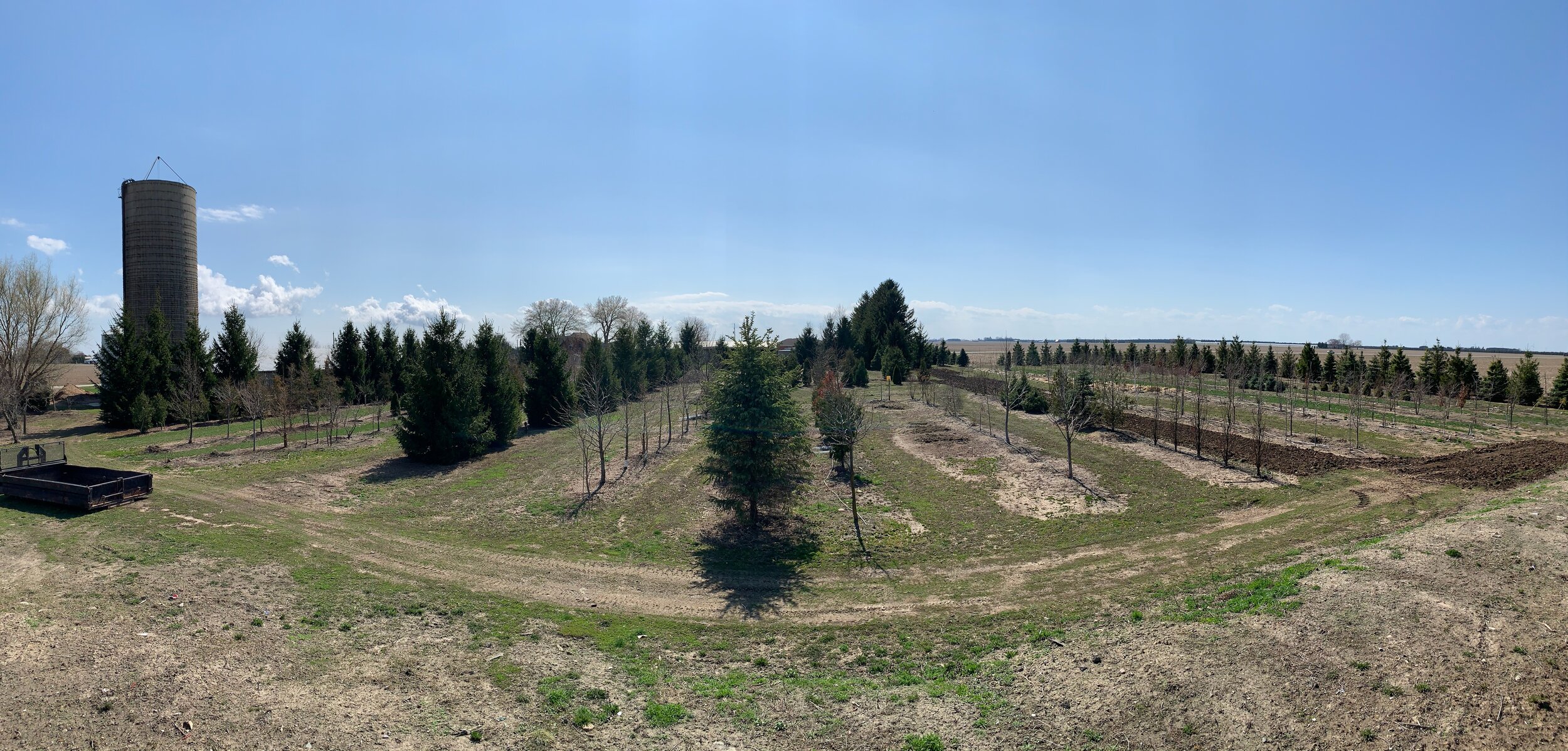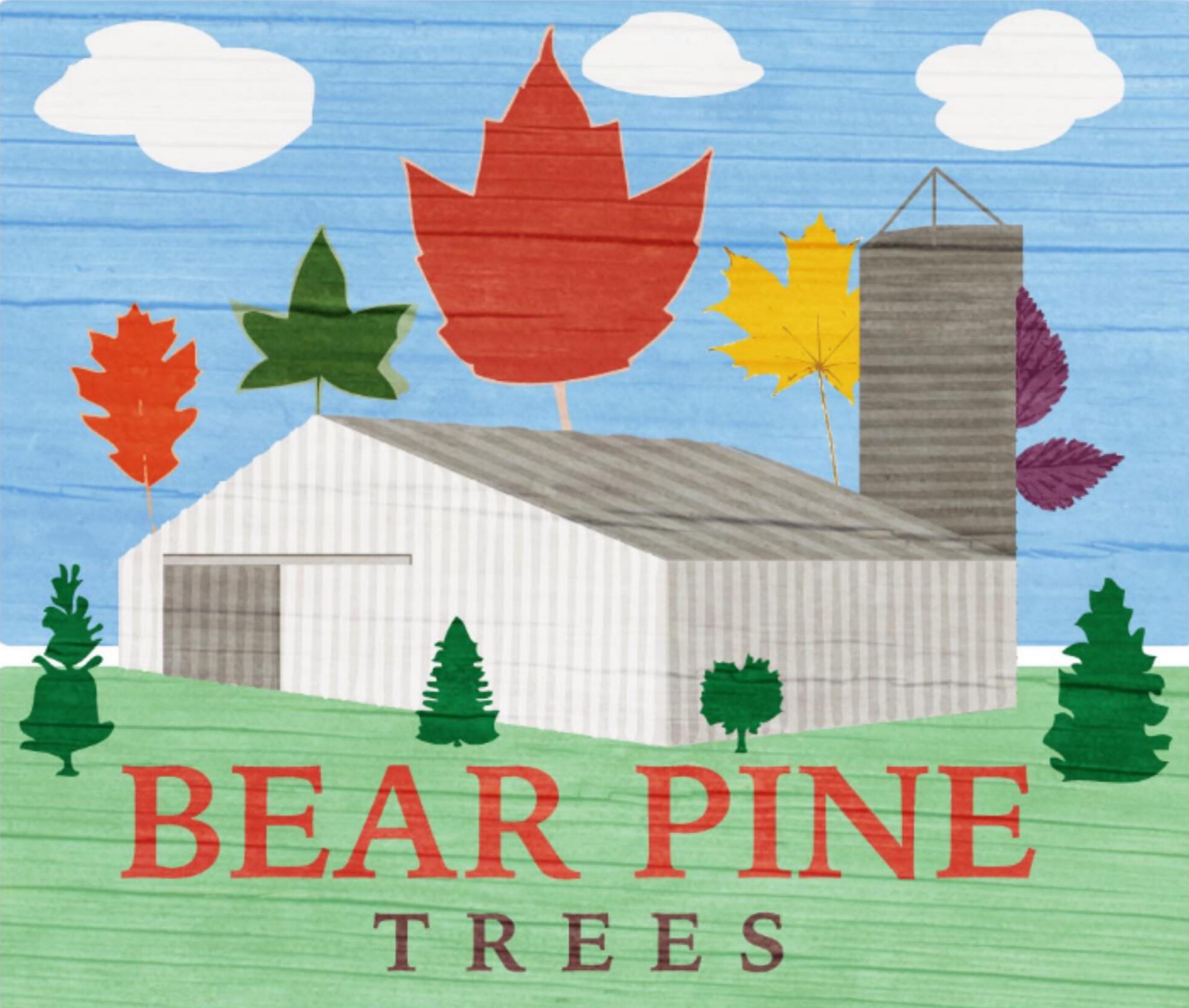Growing process
The Bear Pine difference is found in my growing process.
I have been growing trees at my farm for the last fifteen years. I have a horticulture diploma and I’m a certified arborist. I do a great deal of research on tree selection, to find trees with desirable qualities but will perform well in our soils.
Growing large caliper trees
Step 1: Selection
I buy my trees usually bare root at sizes from half to three quarter inch caliper (thickness six inches from ground), or around five-six feet in height. I source these from three or four excellent growers in the Niagara region.
Step 2: Planting
I plant them in a raised bed, either directly in a bed, or in fabric grow bags (read more about these below). Then, set them up on drip irrigation to keep roots fibrous and close to the ball size at digging time.
Step 3: Growing
I grow trees for up to three or five years. In that time there is a lot of weed control, wrapping and unwrapping of tree trunks - to protect trunk from damage by critters during winter months, staking - to keep trees straight, and monitoring of soil - for moisture and fertilization.
Step 4: Pruning
The most time-consuming job is pruning. I hand prune all of my trees at least three times a year. It's a lot of work but extremely important for the structure, appearance, and longevity of the tree. Pruning keeps the tree in balance - ensuring there is one central leader and keeping all others from competing with it.
Pruning prevents branches that grow:
at wrong angles - crossing and rubbing other branches
in wrong areas (suckers and water sprouts)
too close to each other
too aggressively
Step 5: Prepping for Transplant
If the trees reaches a certain maturation or doesn’t grow fast enough, they must be moved to a different location to give them more room and to allow the opportunity to prune the roots. This helps to keep the tree transplantable. For every root that is cut, many more will sprout. And these will be fibrous feeder roots. This can shock the tree for the first growing season but will help it in the long run.
A word on grow bags.
Most nurseries grow their trees in plastic pots for a year then offer them for sale or in the field, grow them on and sell them as balled and burlapped. I do that as well but I also plant them in fabric containers. I buy my bare root tree from an excellent producer in the Niagara region and plant them in these fabric bags, in the ground for up to 3 years. This production practice is a better alternative to growing in pots. Roots of a tree planted in pots will circle the pot and become tangled, eventually choking each other.
As the roots of the plant grow in a fabric container, they hit the fuzzy inside fabric of the bag. Roots do not circle on the fabric as they do against plastic. Instead the root is caught by the fuzzy inner surface of the material. The root penetrates the fabric. The tough fabric, however, prevents the root from expanding. The root is choked or girdled by the fabric. The choking causes the root to lose its apical dominance and lateral branching or pruning occurs inside the bag
When a root is pruned it puts out multiple side shoots so instead of one thick root we now have several small feeder roots. This makes the tree more transplantable (hits the ground running)
With this practice I can offer a tree that has a smaller, root ball ratio to tree size, and can also offer the tree later in spring or earlier in the fall then balled and burlapped.

